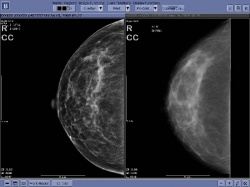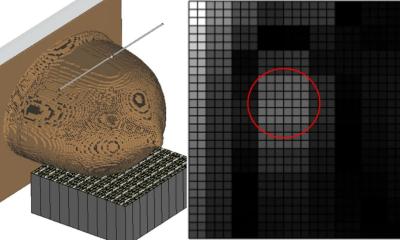How do you improve mammogram accuracy? Add noise
Members of a Syracuse University research team in the USA have shown that an obscure phenomenon called stochastic resonance (SR) can improve the clarity of signals in systems such as radar, sonar and even radiography, used in medical clinics to detect signs of breast cancer. It does this by adding carefully selected noise to the system.


The result has been a distinct improvement in the system's ability to correctly identify precancerous lesions, plus a 36 percent reduction in false positives. The inventors have developed a novel method of calculating precisely the correct type and level of noise to add to existing noise in radiography or a similar system.
"We see a broad spectrum of applications for this technology," says research assistant professor Hao Chen. "If a system's performance is unsatisfactory, we add noise to the system based on a specific algorithm that can significantly improve system performance."
A patent covering the technology has been issued to Chen, Distinguished Professor Pramod K. Varshney and research professor James Michels. All are associated with SU's L.C. Smith College of Engineering and Computer Science.
In mammography studies carried out by doctoral candidate Renbin Peng, the challenge was to identify clusters of micro-calcifications in breast tissue. These early signs of precancerous conditions average only 0.3 mm in size and offer only subtle contrast with surrounding tissue. In addition to improving detection of these lesions, the group has reduced false positives by more than a third.
While the current focus of the research group is on medical uses of stochastic resonance, other applications are expected in enhancing audio, video, geophysical, environmental, radar and other signals. The group has been receiving support from the U.S. Air Force Office of Scientific Research. Ongoing investigations by the Syracuse group are expected to produce further improvements in the efficiency and robustness of the SR-based detection techniques.
06.01.2010











